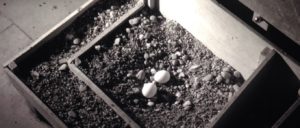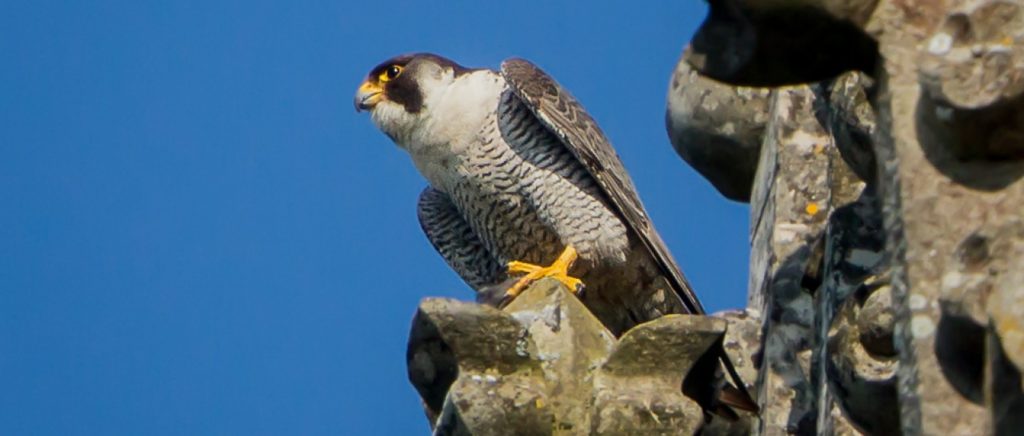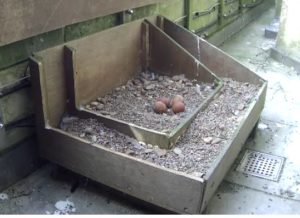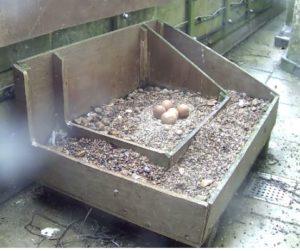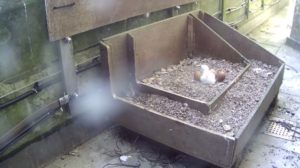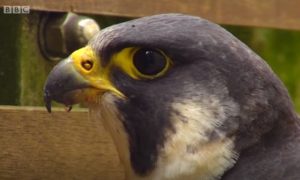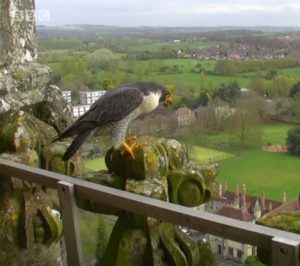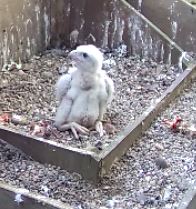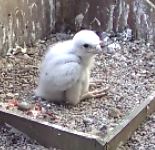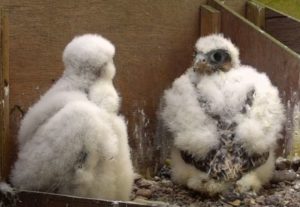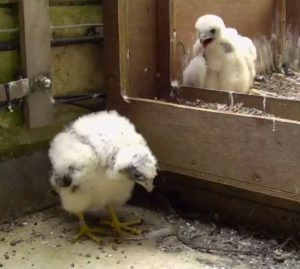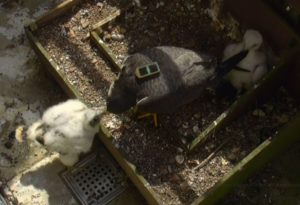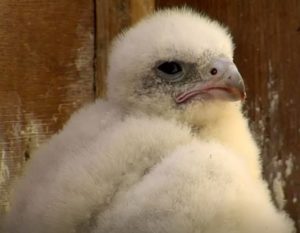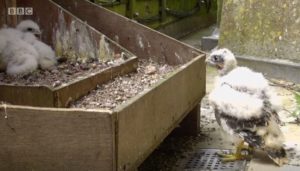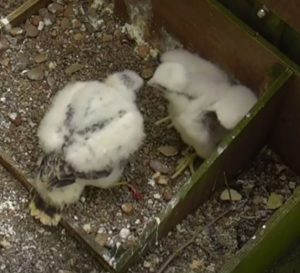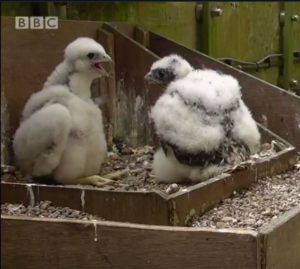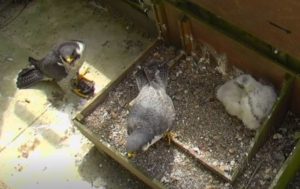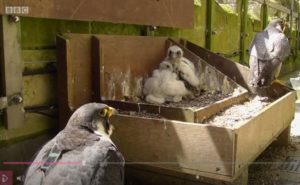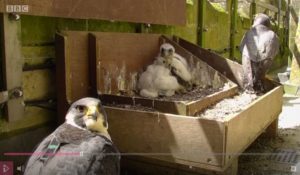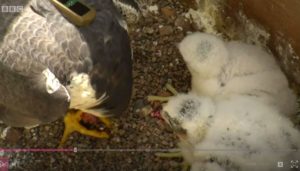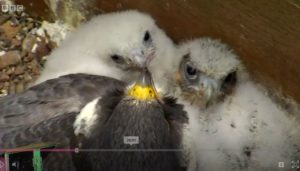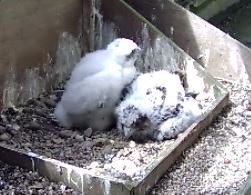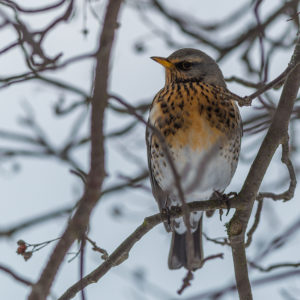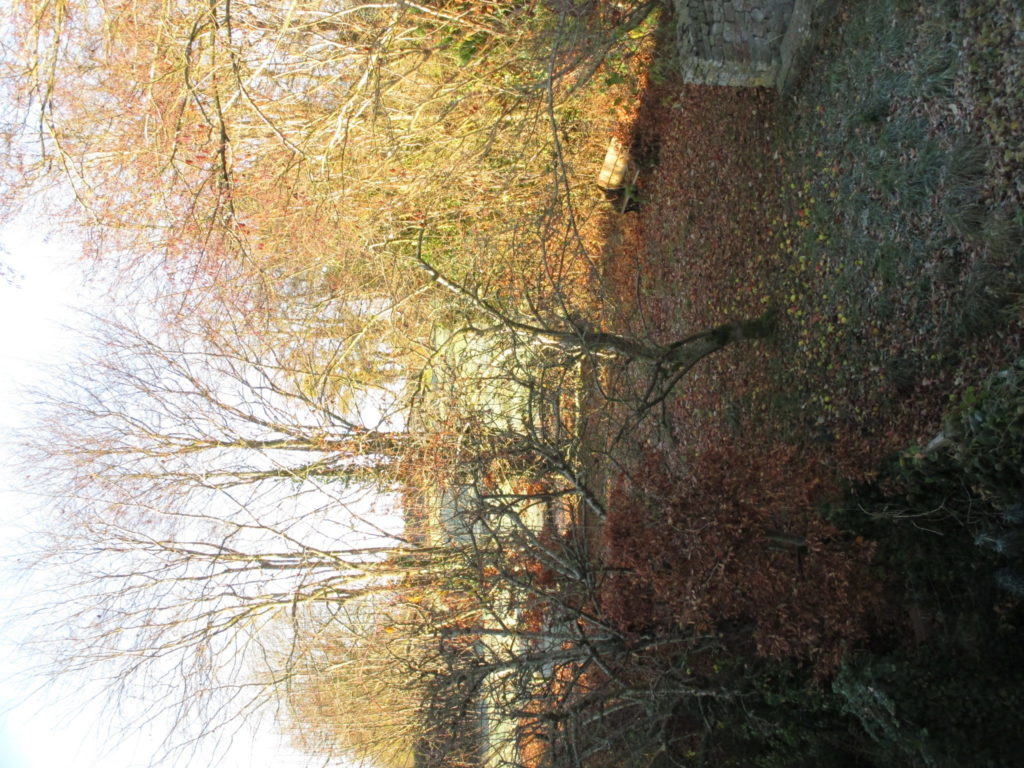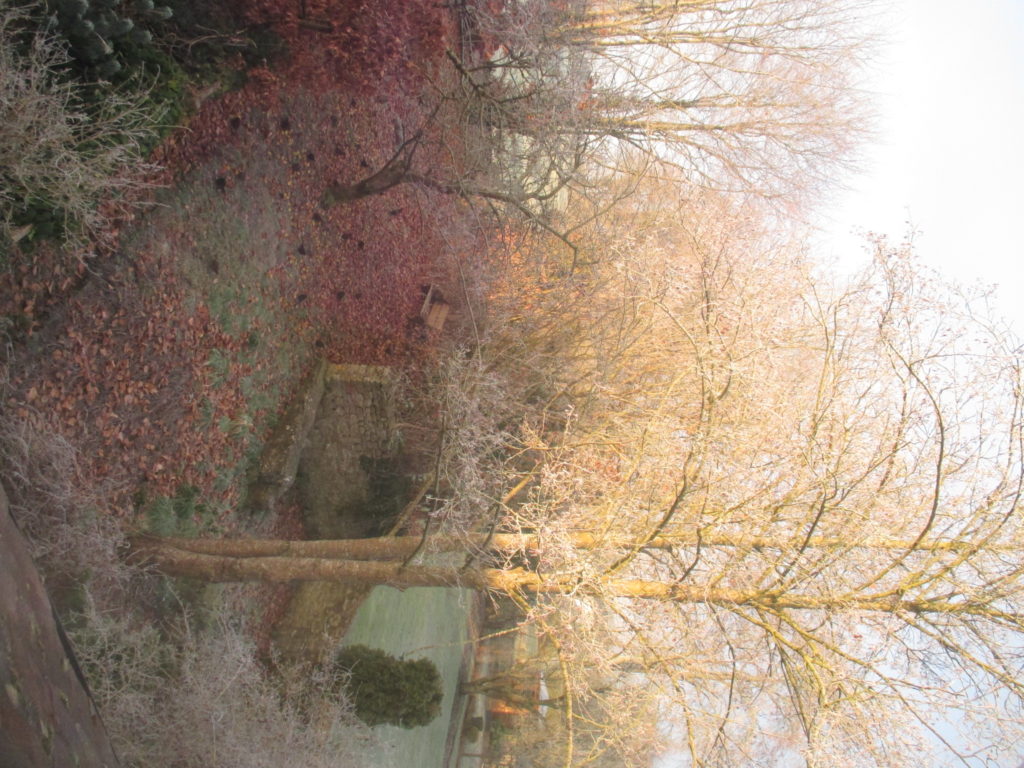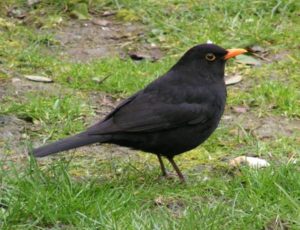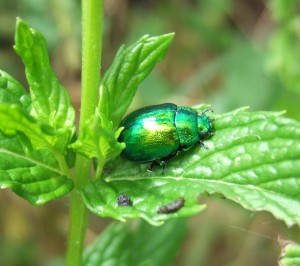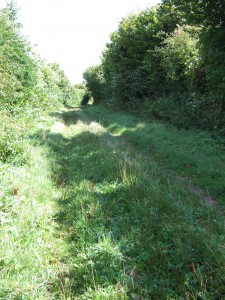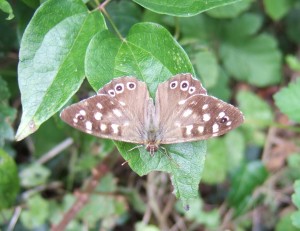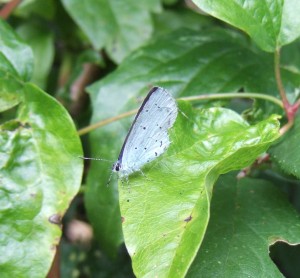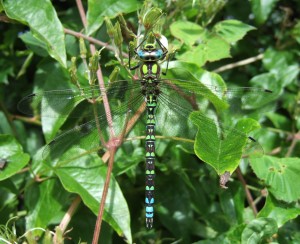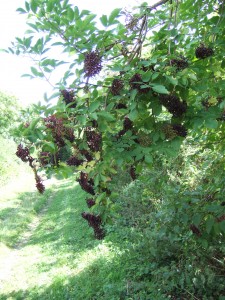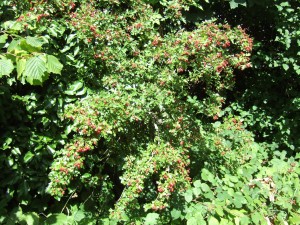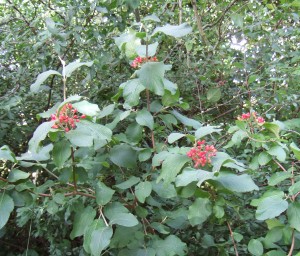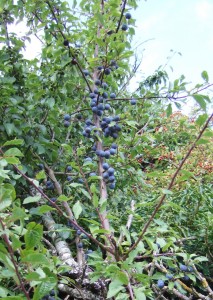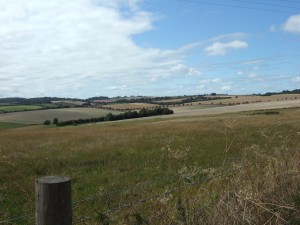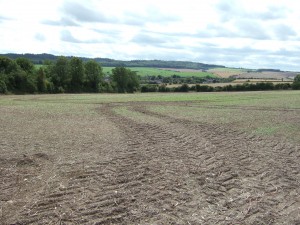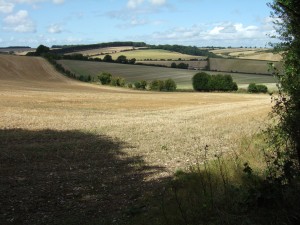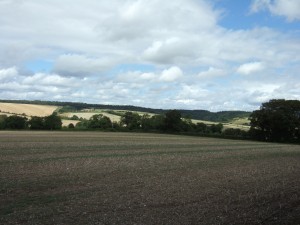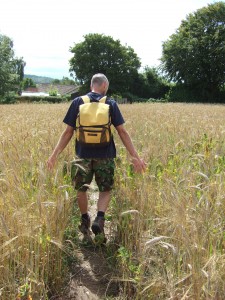Good news: the Salisbury Cathedral peregrines have successfully nested again. The first egg was laid on Friday 31 March, the second on Sunday 2 April, and a third is expected at any time. (9 June 2017: scroll down for updates!)
The Cathedral has set up a webcam of the nest which should be available on this page. The Cathedral also has a Youtube channel, on which there are several videos about the peregrines.
At 18.04 pm on 6 April I can see there are still two eggs on the nest. I do hope she lays more. Last year’s brood had four eggs. (By the way, do use the ‘full screen’ facility for the webcam: it’s a tiny screen otherwise and the details will be barely visible if you don’t enlarge.)
Also great to learn is that one and possibly two other peregrines have been spotted around the Cathedral. These might be the juveniles from last year’s brood.
These good pieces of news follows on the shocking, shameful news that one of first chicks to be hatched at the Cathedral, in 2014, was recently shot and injured. It was found on farmland near King’s Somborne in Hampshire on 11 March, and is being cared for by the Hawk Conservancy Trust near Andover. Hopefully a full prosecution will be brought under the Wildlife and Countryside Act 1981. A peregrine falcon is a Schedule 1 Protected Bird under the law, and injuring or killing it is an offence. The police and the RSPB are currently investigating.
I’ve followed the progress of the peregrines in a 2016 blog post and in a 2015 one, and in a 2014 one.
7 APRIL UPDATE: A third egg this morning, yay!

Three eggs! Morning 7 April 2017.
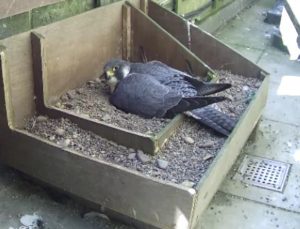
On the nest, 12.20 Saturday 8 April 2017.
UPDATE 16 May 2017: Five eggs in total on the nest: the fourth was laid on Tuesday 11 April and the fifth on Good Friday, 14 April. So that’s 15 days between the eggs. The first egg last year was laid on 28 March and hatched on 16 May, so we should be expecting some hatching action any day now …
Apparently three or four eggs are the norm in the wild, but in urban areas where there is plentiful prey (read: pigeons) clutches can number as many as six.
UPDATE 22 May 2017: I’m not sure when it was born, but there’s a chick in the nest now:
UPDATE 30 May 2017: Great excitement while watching the wonderful BBC Springwatch programme last night as they are featuring the Salisbury Cathedral peregrines. The first part is here, starting at 49:25. They are doing a follow-up part tonight. I hope it’s good news: every time I have looked at the the webcam the adult is sitting on the nest, so I have no idea how many chicks there are. I guess I’ll find out tonight.
UPDATE 31 May 2017: Well, the BBC is keeping us hanging on … another wonderfully-shot update last night on Springwatch, full of beautiful images, but so far no news of any chicks. The second instalment is here, from 24:26. One thing I did learn is that the peregrines are feeding on kingfishers (Alcedo atthis) and greater spotted woodpeckers (Dendrocopos major), among other prey. I guess the kingfishers come from the nearby River Avon with its watermeadows. One of my few ever kingfisher sightings was one darting across the road that enters the central car park by Sainsbury’s in Salisbury: a small tributary of the river runs alongside it.
UPDATE 1 June 2017: Finally we learn from Springwatch that a lone chick hatched, out of the five eggs laid – talk abut stringing it out! This is in contrast to four chicks (only two of which survived to fledge) out of four eggs last year. The non-hatched eggs have been removed from the nest for health reasons, because if the spoiled eggs break the chick could be affected by the rotten contents. The eggs will be analysed to see why they failed: worryingly the spectre of insecticides causing thin shells was raised as a possible cause. The upside is that the lone chick is getting all its parents’ attention and is being fed like a king, with consequent fast growth. The third instalment is here, starting at 49:41.
UPDATE 2 June: Just a brief update in last night’s Springwatch, with a live web cam view of the satellite-tagged female on the nest and film of the male eating a hapless green woodpecker (Picus viridis). The segment is here, starting at 8:13; it’s followed by a longer segment on some cliff-nesting peregrines.
UPDATE 8 June: Well, what a difference a few hours make! I checked on the webcam yesterday morning and it was down; I didn’t check back so got the surprise via Springwatch last night: a second peregrine chick has been successfully introduced to the nest and is already being happily fostered by the adults.
The foster chick was one of three chicks in a nest in Shropshire; tragically last weekend the parents were found dead, cause as yet unknown, on the ground below the cliff along with a dead pigeon. Toxicology tests are being undertaken, but poisoning is suspected. Utterly shameful if that is the case. Luckily the chicks were unaffected. They were removed from the nest by RSPB experts, checked over by a vet, and rehomed in the wild: the other two have been fostered to another nest in the Midlands. The segment on last night’s Springwatch starts at 10:51. The male, 25-day-old foster chick was put in the nest at around 8.30 yesterday morning, and was accepted immediately by both the parents and the original Cathedral chick. He’s a bit bigger than the Cathedral chick, as he’s six days older.
UPDATE 9 June 2017: Last night’s Springwatch had a brief update and showed that the fostering is going really well. The relevant segment starts here at 19:00.
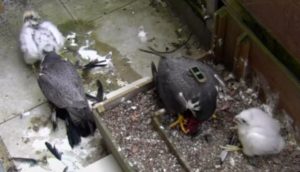
The adult male is feeding the foster chick outside the nest, while the adult female feeds the Cathedral chick on the nest. 8 June 2017.
So far the Cathedral chick hasn’t ventured off the nest.
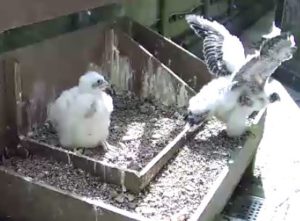
The foster chick trying out its wings: there’s been a whole lot of flapping going on. 9 June, 4.26 pm.
UPDATE 12 June 2017: Both chicks are now out of the nest, mainly hanging round on the parapet out of view of the webcam.
